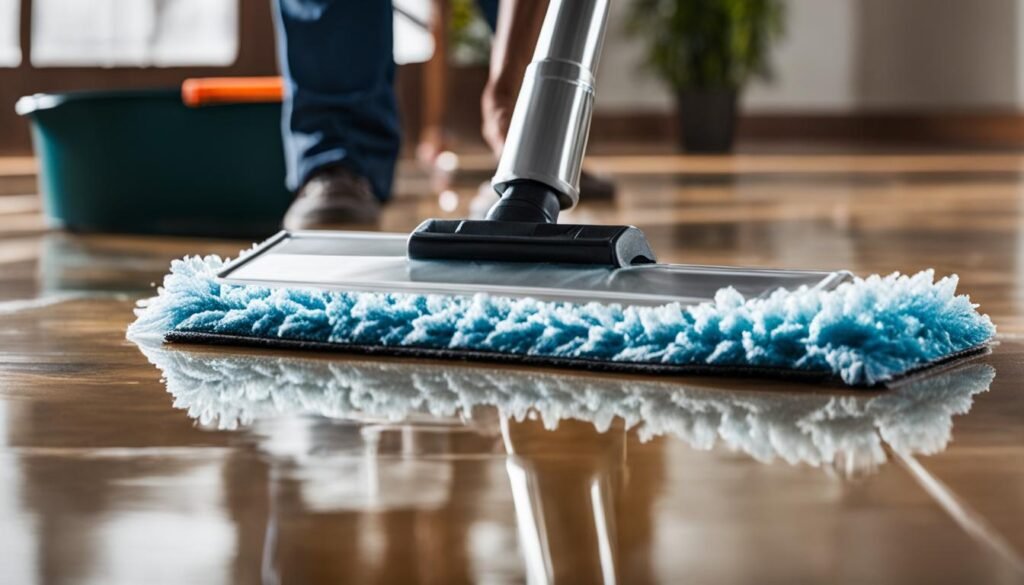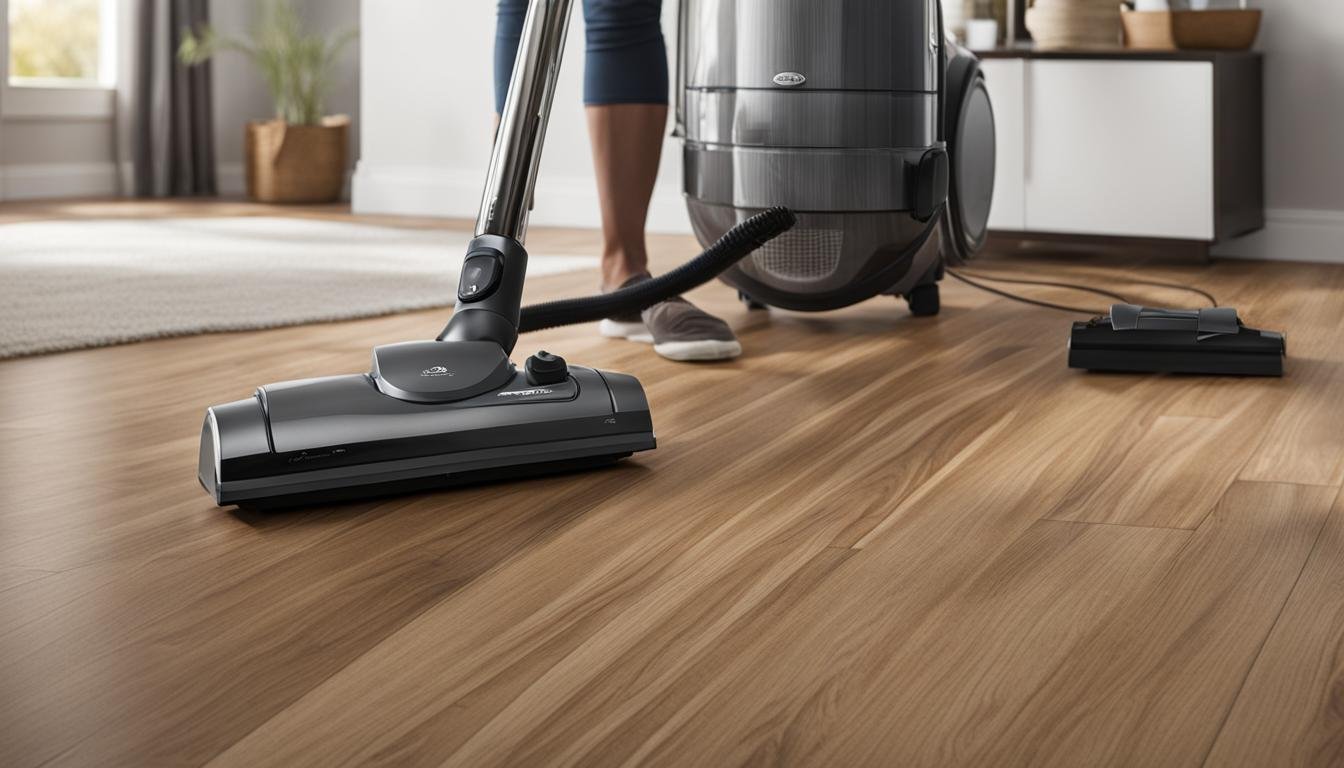As a proud owner of stunning vinyl plank flooring, I understand the importance of keeping it clean and looking its best. But when it comes to cleaning vinyl floors, one question that often arises is, “Can you use a vacuum cleaner on vinyl plank flooring?”
The answer is yes, you can use a vacuum cleaner to clean your vinyl plank floors. However, there are a few things to keep in mind to ensure that you are using the right vacuum cleaner and taking the necessary precautions to protect your flooring.
When choosing a vacuum cleaner for your vinyl plank flooring, opt for one with soft bristles or attachments specifically designed for hard surfaces. This will help prevent any potential scratches or damage that could occur from using a vacuum cleaner with harsh bristles or a rotating brush.
In addition to soft bristles, look for a vacuum cleaner that offers easy handling and good suction power. This will allow you to effectively remove dirt, dust, and debris from your vinyl plank floors without causing any harm.
Now that you have the right vacuum cleaner, here’s how to clean your vinyl plank flooring properly:
Key Takeaways:
- Choose a vacuum cleaner with soft bristles or attachments specifically designed for hard surfaces.
- Ensure the vacuum cleaner offers easy handling and good suction power.
- Clear the area of any obstacles or loose debris before vacuuming.
- Set the vacuum to the appropriate setting for hard floors or attach a soft brush if needed.
- Vacuum thoroughly, paying attention to edges and corners.
How to Clean Vinyl Plank Flooring with a Vacuum
To maintain the beauty and cleanliness of your vinyl plank flooring, regular vacuuming is essential. Cleaning vinyl plank flooring with a vacuum is a quick and efficient way to remove dirt, dust, and debris, keeping your floors looking their best. Follow these simple steps to ensure safe and effective vacuuming for your vinyl plank floors.
Step 1: Choose the Right Vacuum Cleaner
When selecting a vacuum cleaner for cleaning vinyl plank flooring, it’s important to choose one specifically designed for hard floors. Look for a vacuum with adjustable settings or attachments suitable for hard surfaces to prevent any potential damage.
Step 2: Clear the Area and Prepare the Vacuum
Before vacuuming, clear the area of any loose debris or obstacles that could get in the way. This will help prevent your vacuum cleaner from getting clogged or damaged. Ensure that the vacuum’s dustbin or bag is empty to maximize its cleaning efficiency.
Step 3: Set the Vacuum Properly
Set the vacuum cleaner to the appropriate setting for hard floors or attach a soft brush if available. This will ensure gentle but effective cleaning, minimizing the risk of scratches or scuffs on your vinyl plank flooring.
Step 4: Vacuum Thoroughly
Vacuum the entire vinyl plank flooring area, paying extra attention to edges and corners where dirt and debris tend to accumulate. Move the vacuum in overlapping passes to ensure all areas are thoroughly cleaned.
Step 5: Regular Maintenance
Regular vacuuming is vital for maintaining the cleanliness of your vinyl plank flooring. Make it a habit to vacuum at least once a week, or more frequently in high-traffic areas. This will help prevent dirt and grime from becoming embedded in the flooring and extend its lifespan.
By following these simple steps, you can keep your vinyl plank flooring clean and looking its best. Regular vacuuming, along with proper maintenance and care, will help preserve the beauty and longevity of your floors for years to come.
| Vacuuming Tips for Vinyl Plank Flooring |
|---|
| Choose a vacuum made specifically for hard floors. |
| Clear the area of loose debris before vacuuming. |
| Set the vacuum to the appropriate setting for hard floors or use a soft brush attachment. |
| Vacuum thoroughly, paying attention to edges and corners. |
| Regular maintenance is key to keeping your vinyl plank flooring clean and free of dirt and grime. |
How to Clean Waterproof Vinyl Plank Flooring
Cleaning waterproof vinyl plank flooring is a simple process that can help maintain its beauty and longevity. By following these steps, you can keep your floors looking pristine.
Gather Your Cleaning Supplies
Before you begin cleaning, make sure you have all the necessary supplies on hand. Here’s what you’ll need:
- Vinyl floor cleanser or mild dish soap
- Warm water
- Soft cloth or mop
- Vinyl floor cleaner for tough stains
Remove Dirt and Debris
Start by sweeping or mopping the floor to remove any dirt or debris. This will prevent scratching and make the cleaning process more effective.
Prepare a Cleaning Solution
In a bucket, mix vinyl floor cleanser or mild dish soap with warm water. Use a ratio of 1 part cleanser to 10 parts water. Avoid using excessive amounts of water, as vinyl plank flooring is not completely waterproof beneath the surface.
Clean the Floor
Dampen a soft cloth or mop with the cleaning solution and gently clean the floor in small sections. Avoid using too much water, as excess moisture can damage the flooring. Pay extra attention to areas with stains or spills.
Tackle Tough Stains
If you encounter any tough stains that the regular cleaning solution couldn’t remove, use a vinyl floor cleaner specifically designed for vinyl flooring. Follow the manufacturer’s instructions and test the cleaner in a small, inconspicuous area first to ensure it doesn’t cause any damage.
Prevent Damage
To keep your waterproof vinyl plank flooring in optimal condition, avoid using toxic chemicals, harsh tools, wax or polish, and steam cleaners. These can cause permanent damage to the flooring. Stick to the recommended cleaning methods and products for best results.

| Do’s | Don’ts |
|---|---|
| Regularly sweep or mop to remove dirt and debris | Avoid using excessive water that can seep into the seams |
| Use a soft cloth or mop when cleaning | Avoid using harsh chemicals or abrasive tools |
| Follow manufacturer’s instructions for cleaning products | Avoid waxing or polishing the floor |
| Wipe up spills immediately to prevent stains | Avoid using steam cleaners |
The Disadvantages of Vinyl Flooring
While vinyl flooring has its advantages, it is essential to consider the disadvantages before making a decision. One of the main drawbacks of vinyl flooring is its susceptibility to scratches. Heavy furniture or sharp objects can leave unsightly marks on vinyl floors, requiring extra caution and protective measures.
Another disadvantage is the difficulty of repairing or replacing a single vinyl tile. In some cases, fixing a damaged tile may involve removing and replacing a larger section of the flooring, which can be costly and time-consuming.
In addition, vinyl flooring generally has a shorter lifespan compared to other types of flooring. Over time, it may show signs of wear and tear, requiring replacement sooner than expected. This can be a disadvantage if you are looking for a long-lasting flooring option.
Furthermore, there are concerns about the environmental impact of vinyl flooring. The use of polyvinyl chloride (PVC) in its production raises questions about sustainability and chemical emissions. If environmental factors are a significant consideration for you, it may be worth exploring alternative flooring options.
FAQ
Can I use a vacuum cleaner on vinyl plank flooring?
Yes, you can use a vacuum cleaner on vinyl plank flooring. It is an excellent method for removing dirt, dust, and debris. Just make sure to choose a vacuum cleaner specifically made for hard floors, with soft bristles, easy handling, and good suction.
How do I clean vinyl plank flooring with a vacuum?
To clean vinyl plank flooring with a vacuum, start by clearing the area of any obstacles or loose debris. Make sure to set the vacuum to the appropriate setting for hard floors or attach a soft brush if needed. Vacuum thoroughly, paying attention to edges and corners. Regular maintenance is key to keeping your vinyl plank flooring clean and free of dirt and grime.
How do I clean waterproof vinyl plank flooring?
Cleaning waterproof vinyl plank flooring is easy. Start by removing any dirt or debris by sweeping or mopping the floor. Create a cleaning solution using vinyl floor cleanser or mild dish soap mixed with warm water. Dampen a soft cloth or mop with the cleaning solution and gently clean the floor in small sections. Avoid using too much water and make sure the floor dries quickly. For tough stains, use a vinyl floor cleaner specifically designed for vinyl flooring.
What are the disadvantages of vinyl flooring?
While vinyl flooring has its advantages, such as being easy to clean and maintain, there are also some disadvantages to consider. Vinyl flooring is prone to scratches, especially from heavy furniture or sharp objects. Repairing or replacing a single vinyl tile can be challenging, as it may require replacing a larger portion of the flooring. Vinyl flooring also has a shorter lifespan compared to other types of flooring, and some people have concerns about its environmental impact due to the use of polyvinyl chloride (PVC) in its production.





Leave a Reply